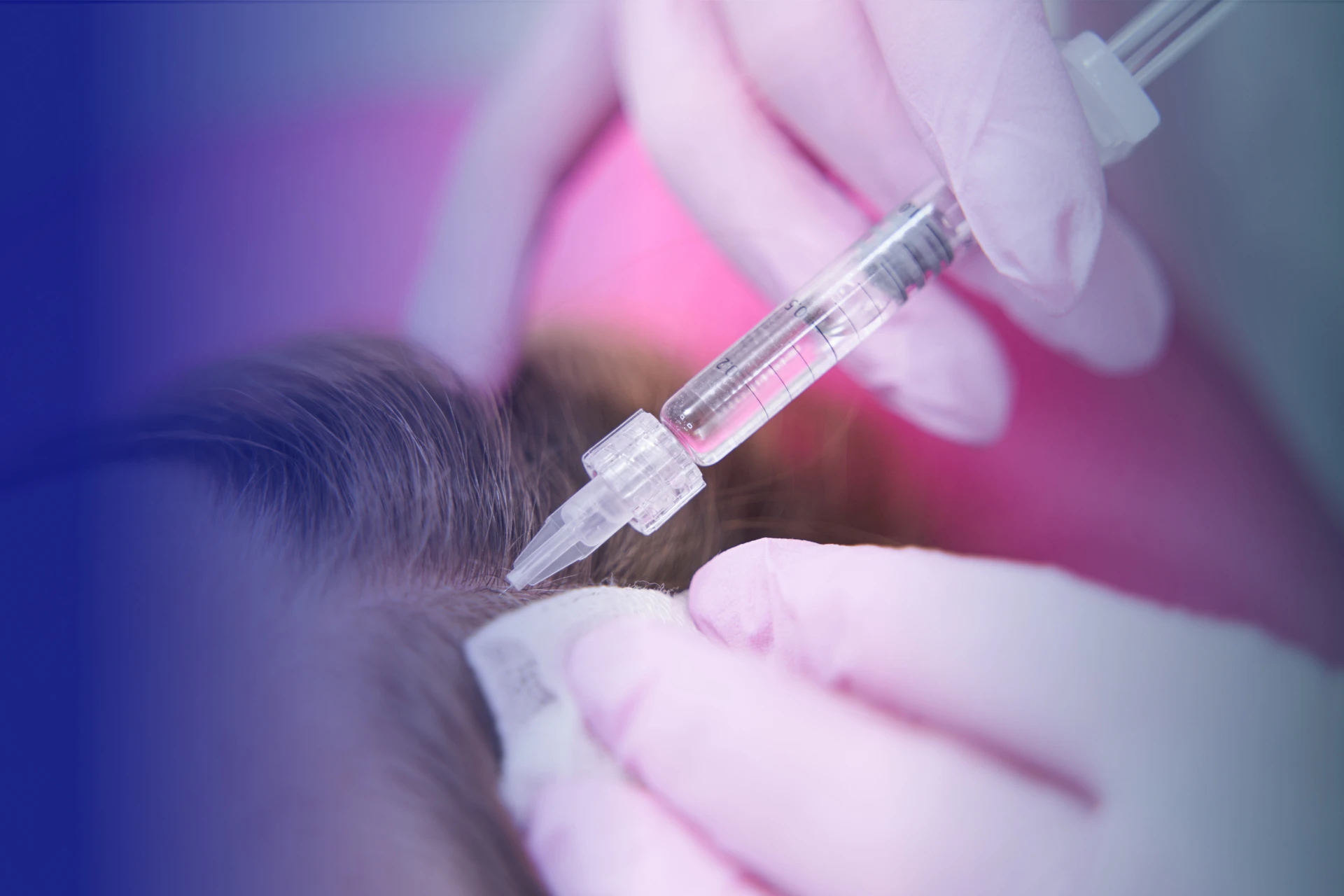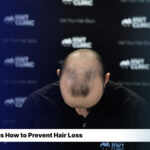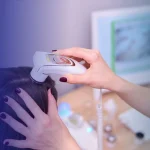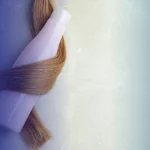
Table Of Content
Hair loss is an important aesthetic problem for both men and women. One of the methods used in hair loss treatments is PRP (Platelet Rich Plasma). PRP treatment is successful in many areas such as hair loss, wound and skin rejuvenation. In addition to reducing genetic hair loss with PRP hair treatment, it is possible to revive lifeless, fine and weak hair and find solutions to the problem of dandruff and oily hair. PRP is a very useful hair loss treatment in addition to hair transplantation alone. People having done PRP for hair loss and different hair problems mostly give positive feedback.
PRP is the separation of plasma from a person’s body by a special process and returning to the body by injection. The plasma is very effective in wound healing thanks to its growth factor and protein-rich contents. PRP provides very good results in healing and removing scars, rejuvenation of skin, preventing hair loss and improving hair quality and orthopedics. One of the most important features of PRP is that it is a completely natural treatment without giving any foreign substances and drugs to the body. Since the person’s own blood is used in the treatment, there is no risk of any contagious disease and no side effects.
Hair PRP is one of the most preferred methods for people who have hair loss problems by preventing hair loss in a short time. After hair PRP is applied against hair loss, hair tissue is fed and begins to develop. During the process, thinning and weakening hair follicles are stimulated and repaired. Then the hair comes to life in a more healthy way.
The benefits and application areas of PRP treatment, which is very often preferred today, can be listed as follows;
Daily hair loss in women and men is considered normal. However, hair loss seen more than 100-150 hairs should be taken seriously and treated. PRP, among other benefits, especially in hair loss has very successful results. The application of PRP without side effects and without any foreign substance or medication is a priority choice for those who have hair loss problems. PRP process used in the treatment of hair loss is taken from the person’s own blood and processed to feed the roots called fibroblast, which will provide the development of the scalp that is injected. Hair PRP gives very positive results especially in genetic shedding. In addition to PRP, hair mesotherapy is also useful in hair loss.
Hair loss treatment with PRP is about 30 min. During the application, the anesthesia used during the application is not painful thanks to effective creams. After PRP, there is no scar on the scalp and the person can continue his / her routine life. Treatment of hair loss with PRP depends on the individual, but may last for about 3-4 months. PRP session is applied to the scalp at intervals of 30 days.
Hair PRP can be applied by different methods. These methods are;
For more effective results, combination of dermapen, injection and electroporation methods may be considered. Thus, the result can be much more efficient.
However, the choice of these 3 different types of treatment should be left to the physician’s decision.
Before the PRP treatment for hair, approximately 10 cc of venous blood is collected. The collected blood is divided into white and red blood in the centrifuge. Red blood filled with white blood cells, clotting factors, platelets, PGF (Platelet growth factor) is the type of blood needed for PRP. Red blood is subjected to a special treatment and the area needed on the person’s scalp is first anesthetized with anesthetic creams. Then it is injected into the scalp with the help of micro needles. Although PRP may be applied to the hair, it may vary slightly depending on the person and may be painful as a pin prick. After 30 minutes of application, there is no scarring.
After PRP treatment, scalp tissue regeneration begins immediately. Weakened hair follicles are repaired and then strong hair production begins.
PRP should be repeated at a mean interval of 4 to 6 weeks. It is extremely important that PRP treatments for hair or skin are performed by specialist physicians through application kits produced by the biotechnology company.
When hair loss treatment is supported by PRP application, the newly transplanted hair follicles adapt to the scalp in a short time and the weakened hair follicles revive. Fue method is the method of placing the hair follicles one by one in the required scalp area. To place the hair follicles, ducts about the size of a pinhead are opened and the hair follicles are inserted into the holes. After the hair transplantation, it is important that the holes in the scalp begin to close rapidly and enter the healing process. PRP supports hair transplantation with this effect. PRP supported FUE hair transplantation can be done in two different ways. The first is that the hair follicles collected from the donor area during hair transplantation application are kept in PRP-containing liquid during the extraction and preparation for transplantation and provided to be fed in this process. The other method is PRP which is applied after a certain time after hair transplantation is completed.
PRP after hair transplantation nourishes and strengthens hair follicles and accelerates wound healing. It reduces hair loss of 5%, which is considered normal after hair transplantation, and enables new hair to grow stronger.
PRP applied to the scalp after hair transplantation increases the quality of hair and the effect of hair transplantation. The hair transplanted after hair transplantation, show themselves in the scalp within about 3 months. Therefore, having hair PRP at 1 or 3 months of hair transplantation increases the success rate of hair transplantation treatment. During hair transplantation treatment, 3 to 10% of the follicles planted are still weak. With the PRP treatment applied to the hair, the scalp’s insufficient blood flow is reduced and the hair roots are revitalized.
PRP treatment can be started approximately 1 month after hair transplantation. However, it is also important that the specialist physician wants to apply PRP at the time of hair transplantation treatment.
PRP has no side effects on hair or skin. Re-injecting one’s own blood into their own tissue makes PRP an extremely natural treatment. No allergic reactions are expected during the PRP session, except for redness and mild pain. However, PRP hair treatment should not be applied to people who are treated for cancer, who are breastfeeding, who have skin infections and who use blood thinners.
PRP does not last a lifetime. After PRP is applied to the hair follicles, the effect continues for an average year. If the scalp is properly cared for, it can take up to 18 months. PRP for hair should be repeated regularly at 6 or 1 year. Periodically
PRP has a great benefit to the scalp.
PRP hair treatment fees for hair loss and improving hair quality vary depending on the center of PRP and the frequency of administration. Today, PRP is applied in many centers and hospitals that treat hair and skin or perform aesthetic applications. However, it is recommended that PRP be performed both by good equipment support and by specialist physicians. Expected results may not be obtained with hair PRP performed by non-specialist physicians and equipment of insufficient quality. Therefore, it is necessary to pay close attention to the selection of the PRP-making center. The comments of PRP recipients, the physicians at the PRP center and the quality of the equipment used will guide you.
Whether PRP is beneficial for hair may vary depending on a number of factors. Before you get a PRP, your doctor must have done the necessary tests and corrected any deficiencies or excesses after the results. We can summarize the four main factors in the success of PRP treatment for hair;
In the light of these factors, it is possible to obtain maximum results from PRP treatment for hair. If you cannot find a solution to your permanent hair loss problems with PRP treatment, you can consider the option of hair transplantation. Turkey hair transplant offers permanent solutions for permanent hair loss problems with its qualified clinics and doctors. While there are permanent solutions for hair loss problems in Turkey, these solutions also stand out as being cost-effective. The country is renowned for its skilled surgeons, modern clinics, and competitive prices, making it an attractive option for those looking to restore their hair. Turkey hair transplant cost is significantly lower than in many Western countries.




